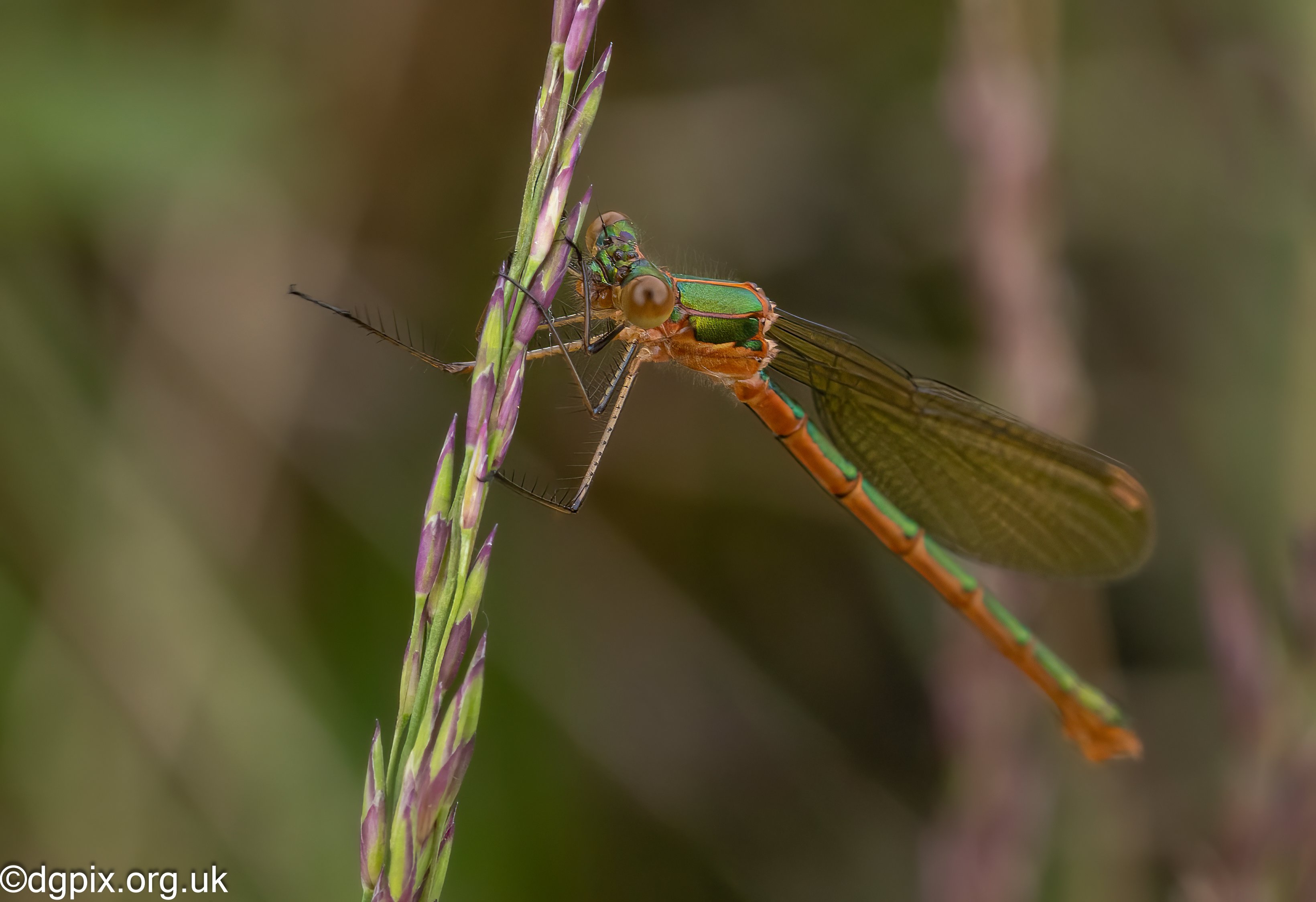
Montiaghs Moss: Mid-Season Biodiversity Notes
With some time to myself, I thought I'd take a couple of hours to see what was happening in a County Antrim lowland peatland site managed by the RSPB, Montiaghs Moss. I was here a few weeks ago and located a Lesser Butterfly Orchid which was a treat to see and photograph. It has since passed it's best and it's flowering season is ending.
Renowned for its biodiversity, this site supports species such as the Marsh Fritillary butterfly—though none have been observed here so far this year—orchids, various heath and peat bog specialist plants, and the rare Irish Damselfly, alongside many other notable Odonata.
My focus for the day was the Silver Hook moth—a species I regularly find at my usual peatland site, Brackagh Moss, but one that has eluded me so far this year, leaving me concerned I might miss it altogether. I was also hoping to spot the Lesser Cream Wave, another specialist moth closely associated with these habitats, and one I had yet to encounter this season.
Silver Hook
I was pleased to see this moth almost immediately after getting into the proper part of the marsh - it was disturbed from some tufts of grasses and landed nicely nearby for close observation and a photograph.
Butterfly Conservation lists the habitat and distribution of this species as:
Boggy heathlands, marshes, fens, and damp upland grassy moorland.
- Countries – England, Wales, Scotland, Ireland
- Restricted to areas of suitable habitat in southern England, Wales, northern and eastern England, south and western Scotland, Isle of Man and Ireland. Seldom seen in numbers except in East Anglia, and Kerry and Co. Louth.

Silver Hook moth in the undergrowth
Irish Damselfly Coenagrion lunulatum
Montiaghs Moss is particularly notable for its population of Odonata species, which include dragonflies and damselflies. Of special interest is the Irish Damselfly (Coenagrion lunulatum), a species with a limited distribution due to its specific habitat requirements. The Irish Damselfly relies on shallow peat pools with abundant floating pondweed and water lilies, which serve as essential perching and breeding sites.
Due to these highly specialised needs, suitable habitats are scarce, and the species is considered rare. Although a previous visit a few weeks ago yielded a sighting near one of the peat pools, no individuals were observed during this visit despite a thorough examination of all available pools. The image below was captured earlier in June and illustrates the habitat preferences of this distinctive species. Also featured is the Emerald Damselfly, an uncommon species which is distinctive in its colouration.
 Irish Damselfly at rest on an unknown pond leaf
Irish Damselfly at rest on an unknown pond leaf
 Emerald Damselfly at rest on grasses
Emerald Damselfly at rest on grasses
Lesser Cream Wave
Another highlight of the day was encountering the Lesser Cream Wave moth, a wetland specialist. I have previously recorded this species in good numbers at Brackagh Moss, so its presence at Montiaghs Moss was anticipated, though this marked my first sighting of the year.
The larvae of the Lesser Cream Wave feed on plants such as Meadowsweet and Common Valerian; in this location, Meadowsweet is likely the primary food source since I have yet to observe any Valerian on site.
 Lesser Cream Wave moth
Lesser Cream Wave moth
Plant Life
Bogs traditionally hold some fairly spectacular plant species, not least the orchids. I mentioned the Lesser Butterfly Orchid earlier and this was still there, albeit, it's past it's best now. Many Common Spotted Orchids were noted in different colours. Particular highlights were Bog Asphodel and Oblong-leaved Sundew, the latter a new plant for me, and one of our fascinating carnivorous plants.
Lots of Cross-leaved Heath as expected, and a good patch of Marsh Bedstraw was a welcome sight, and another plant I hadn't encountered before. It was fascinating to see insects caught in the sticky traps it had laid.
A selection of the plants photographed are below:
.jpg?width=1200&length=1200&name=Bog%20Asphodel%20(2).jpg)




Other species noted were :
- Common Green Grasshopper
- Syrphus species hoverflies
- Sphaerophoria species hoverfly - second sighting
- Tachydromia species diptera - first sighting
- Four-spotted Chaser dragonfly
- Variable Damselfly
- Azure Damselfly
- Nursery Web Spider - with damselfly prey
- Crambus pascuella micro moth
- Brown China Mark moth
- Straw Dot moth
- Ringlet butterfly
- Meadow Pipit birds
